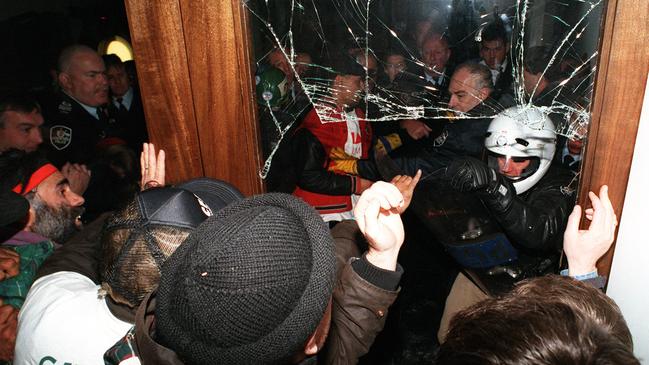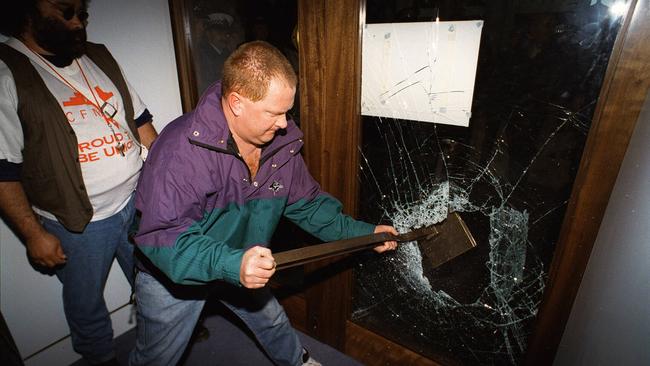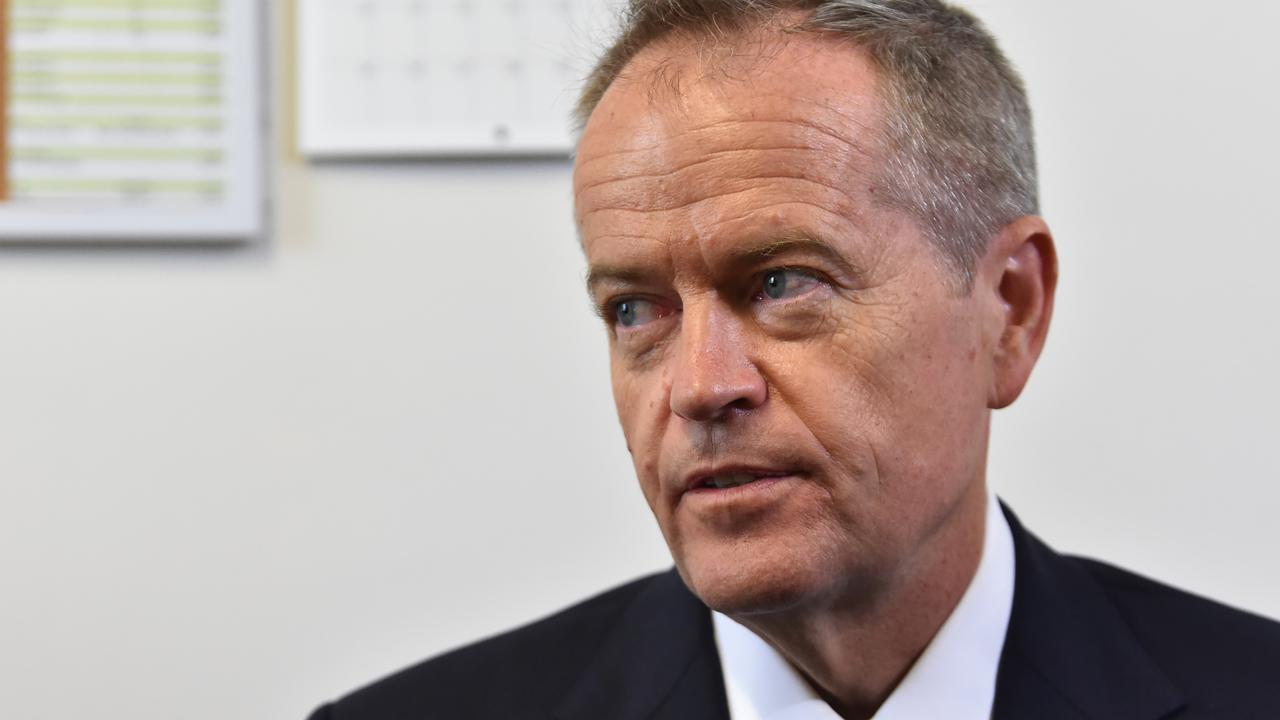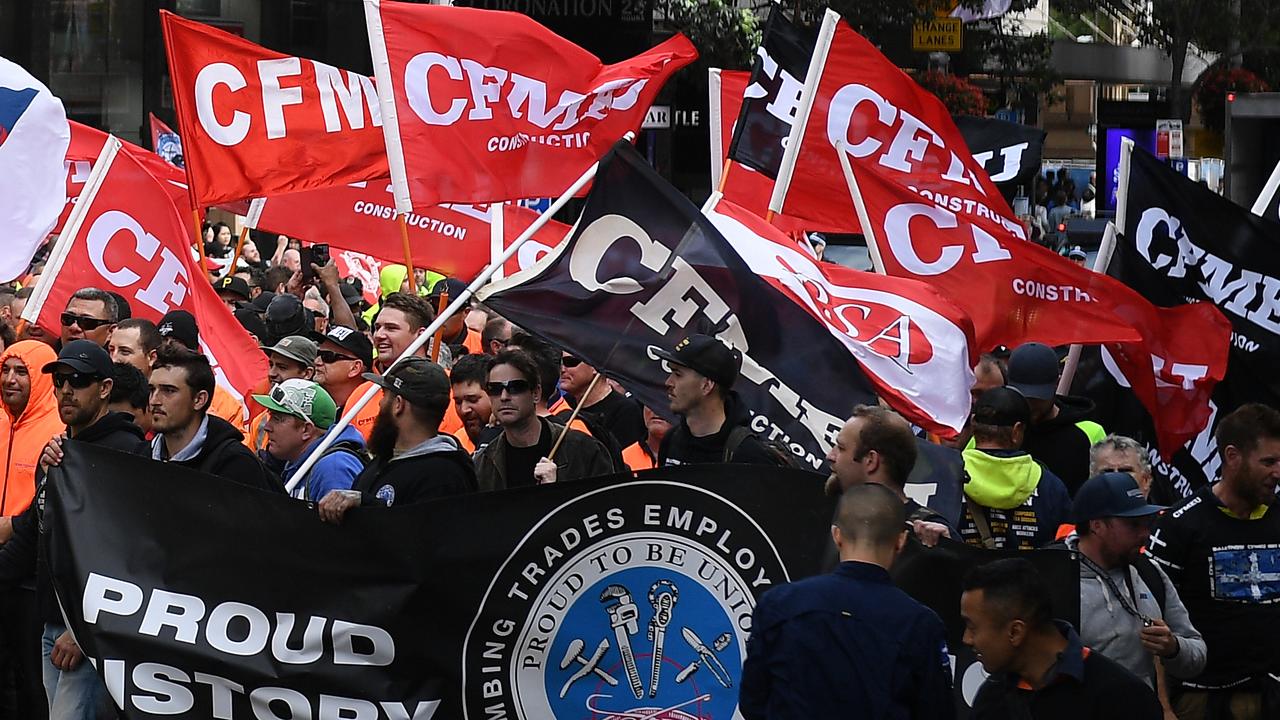Cabinet papers 1996-17: Howard helped plot mass dock sackings
The Howard government authorised the advance of taxpayer funds for mass sackings of union employees, it has emerged.

The Howard cabinet authorised the advance of significant taxpayer funds to Chris Corrigan, allowing the businessman to fund the mass sackings of 1400 union employees, thereby plunging the country into a polarising confrontation on the nation’s docks in 1998.
Two weeks after the then Patrick chief’s plan to train an alternative non-union workforce in Dubai was exposed in federal parliament, cabinet agreed on December 16, 1997, that funds should be made available to waterfront employers to pay for worker redundancies.
Newly released cabinet documents show the government agreed to make the funds available through a “repayable loan … at no expense to the taxpayer” from mid-February 1998.
Seven weeks after the funds became available, waves of security guards, some in balaclavas and accompanied by dogs, swarmed across Patrick terminals just before 11pm on April 7, 1998, locking out union employees.
Cabinet agreed funds would be made available to companies whose employees were made redundant “owing to restructuring and reform in the stevedoring and maritime industry”.
Federal cabinet had already devised a secret master plan in July 1997 involving the mass sacking of union workers on the waterfront and their replacement with non-union labour.
In a letter to workplace relations minister Peter Reith 12 months before the Patrick lockout, John Howard signed off on an “interventionist” strategy. The duo subsequently met Mr Corrigan in late 1997.

“We hoped that Corrigan had the commitment and the plan to implement reform and we provided the framework if he was so disposed to do it, but we were not plotting it, hand in glove,” Mr Howard told The Australian in an interview to mark the dispute’s 20th anniversary in April last year.
“Obviously, the willingness to advance the funding for redundancies was part of it. You had to do that.
“Otherwise, why would he be the least bit serious given that other governments before us had caved in when something like this had arisen?”
Mr Corrigan initially denied knowledge of the Dubai operation before admitting his involvement in February 1998. In an interview with The Australian last year, he admitted he told the government in 1997 about his plan to remove the unionised workforce and bring in non-union contract labour.
“We had to tell them we had a plan to remove the workforce in certain circumstances,” he said.
“There were certain circumstances in which we could declare the companies that employed these people bankrupt, and that’s what we did.”
Mr Corrigan said Mr Howard had been elected in 1996 on a platform of “industrial reform”. Indeed, the government’s support for workplace relations policy changes caused ongoing conflict with the union movement, including the Cavalcade to Canberra rally in 1996 that saw a group of breakaway protesters clash with police and break through the front doors of Parliament House.
“(Howard) had identified the waterfront as an area of reform,’’ Mr Corrigan said.
“So it was after that we went to see the government and said, ‘We agree with you about the opportunities here and the need for change, and here’s how we would go about it’, and they started to think about that,’’ he said.
“I wouldn’t say they endorsed it but they certainly respected the fact that we had a point of view.”
On the night of the April lockout, Mr Reith released a statement almost simultaneously with the Patrick announcement, called a late-night press conference and had redundancy legislation ready to be submitted to parliament the next day.




